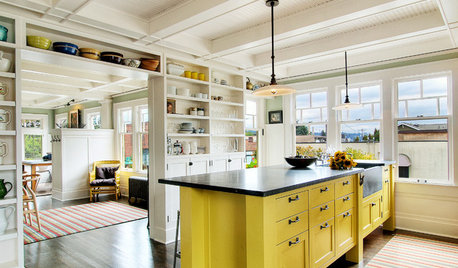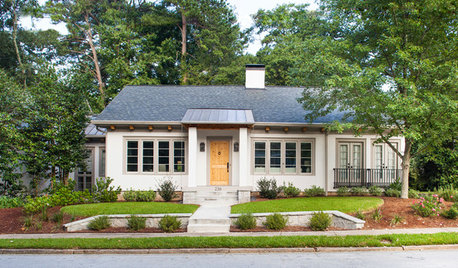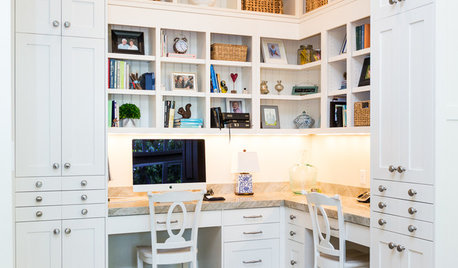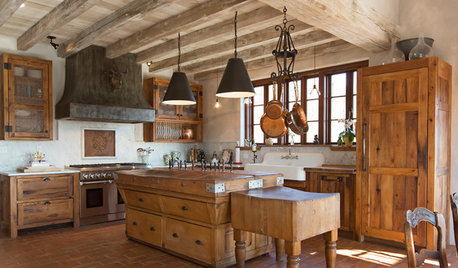Large ficus lyrata donated to library in need of rejuvenation
papercarver
13 years ago
Related Stories

EVENTSWhimsy, Color and Pattern Are Highlights of the 2015 Holiday House NYC
Step inside birthday-party-inspired playrooms and frosting-like spaces in this year's decorators' show house
Full Story
DECLUTTERING10 Types of Clutter to Toss Today
Clear the decks and give the heave-ho to these unneeded items
Full Story
BEDROOMSRethinking the Master Bedroom
Bigger isn’t always better. Use these ideas to discover what you really want and need from your bedroom
Full Story
DECORATING GUIDESDitch the Rules but Keep Some Tools
Be fearless, but follow some basic decorating strategies to achieve the best results
Full Story
KITCHEN DESIGNHow to Lose Some of Your Upper Kitchen Cabinets
Lovely views, display-worthy objects and dramatic backsplashes are just some of the reasons to consider getting out the sledgehammer
Full Story
DECORATING GUIDESEdit Keepsakes With Confidence — What to Let Go and What to Keep
If mementos are weighing you down more than bringing you joy, here's how to lighten your load with no regrets
Full Story
BEFORE AND AFTERSHouzz Tour: A Georgia Foreclosure Gets a Major Overhaul
Gutting and redesigning turn a mishmash 1925 home into a unified haven with better flow
Full Story
DESIGNER SHOWCASES20 Fantasyland Dining Room Designs That Delight
A wonder to behold, these incredible professionally designed rooms take everyday dining over the top
Full Story
HOME OFFICESThe 20 Most Popular Home Office Photos of 2015
Technology paves the way for space-saving work areas, while designers make up for small sizes with style
Full Story
KITCHEN DESIGN15 Unforgettable Kitchen Ideas
Want to create a memorable space? Consider one — or all — of these design elements
Full Story








tapla (mid-Michigan, USDA z5b-6a)
papercarverOriginal Author
Related Professionals
Allentown Landscape Architects & Landscape Designers · Roosevelt Landscape Architects & Landscape Designers · Goodyear Landscape Contractors · Addison Landscape Contractors · Davis Landscape Contractors · Gaithersburg Landscape Contractors · Hollywood Landscape Contractors · Long Beach Landscape Contractors · Northport Landscape Contractors · Palos Verdes Estates Landscape Contractors · St. Louis Landscape Contractors · Wells Landscape Contractors · Wickliffe Landscape Contractors · Barstow Interior Designers & Decorators · Wanaque Interior Designers & Decoratorstapla (mid-Michigan, USDA z5b-6a)
papercarverOriginal Author